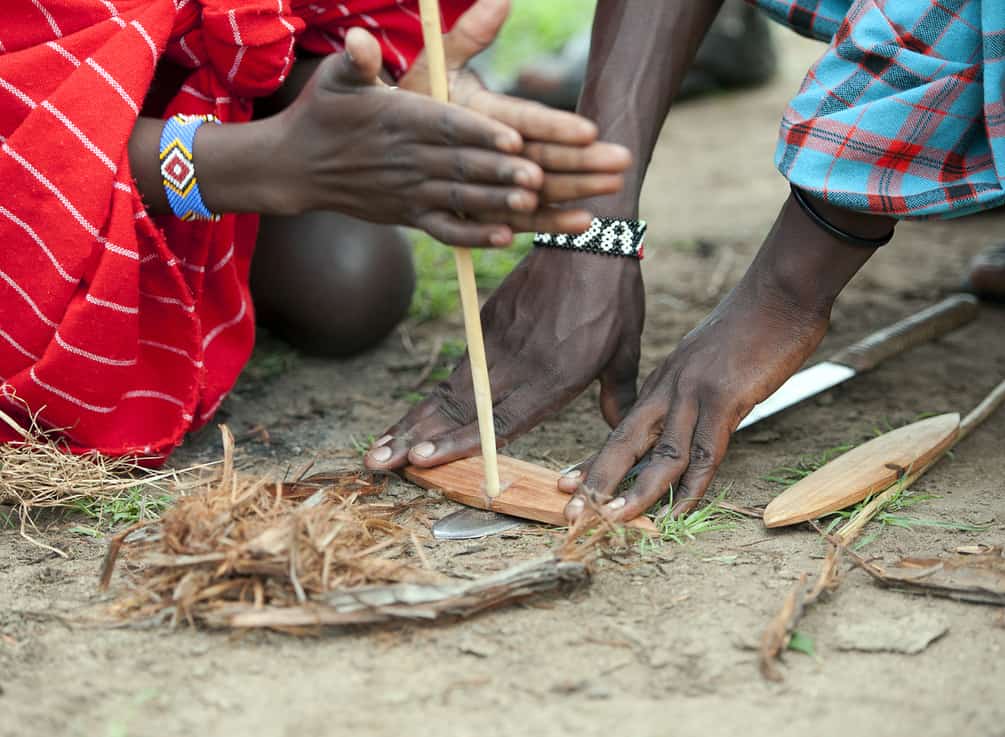Fire has been an essential tool for human survival and comfort since time immemorial. The ability to create fire using only sticks is a valuable skill for campers, outdoor enthusiasts, and those interested in survival techniques. This guide will walk you through the process of making fire with sticks, from preparation to advanced techniques.
Preparation and Materials
Selecting the Right Wood
Choosing the appropriate wood is crucial for successful fire-making. Look for dry, dead wood that snaps easily. Softwoods like cedar, pine, or poplar work well for the fire board, while hardwoods like oak or maple are better for the spindle.
Gathering Essential Materials
To start your fire, you’ll need:
- Tinder: Dry grass, bark, or commercial tinder.
- Kindling: Small twigs and sticks.
- Larger sticks and logs for fuel.
When camping, it’s important to know where to buy firewood to ensure you’re using appropriate and sustainable sources.
Creating a Fire Lay
Arrange your materials in a way that allows for proper air circulation. Start with a small tinder bundle, surrounded by kindling, and gradually add larger sticks as the fire grows.
Fire-Making Techniques Using Sticks
Hand Drill Method
This is the most basic method:
- Create a notch in your fireboard
- Place tinder beneath the notch
- Spin a straight stick (spindle) between your palms on the fireboard
- Apply downward pressure and increase speed until an ember forms
Bow Drill Method
This method is more efficient but requires additional materials:
- Create a bow from a flexible stick and cordage
- Use the bow to spin the spindle on the fireboard
- Apply pressure with a socket (a stone or piece of wood) on top of the spindle
Fire Plow Method
This technique involves rubbing a stick along a groove in a softer piece of wood:
- Create a groove in your fireboard
- Vigorously rub a hardwood stick up and down the groove
- Collect the dust at the end of the groove where it will ignite
Advanced Fire-Making Skills
Adapting to Different Environments
Learn to adapt your techniques for wet conditions, high altitudes, or windy areas. In challenging environments, you may need to build temporary shelters to protect your fire-making efforts.
Improvising Tools
In survival situations, you may need to create tools from natural materials. Learn to make cordage from plant fibers or use rocks as socket stones for the bow drill method.
Maintaining and Nurturing the Fire
Once you have a fire, it’s crucial to maintain it. Gradually add larger pieces of wood and manage airflow to keep the fire burning efficiently.
Safety Considerations
Fire Safety in Camping Areas
Always follow campfire safety and etiquette guidelines. Choose appropriate fire sites and adhere to local regulations and fire bans.
Fire Management
Control the size and spread of your fire. Always have a plan to extinguish it completely before leaving the area or going to sleep.
Personal Safety
Be cautious when handling hot embers and flames. If camping with pets, ensure you practice campfire safety with dogs to prevent accidents.
Practical Applications Beyond Camping
Fire-making skills can be crucial in survival situations for signaling rescuers or purifying water. These techniques are also valuable for those interested in bushcraft and primitive living skills.
Common Challenges and Troubleshooting
Dealing with damp conditions and overcoming physical limitations are common challenges. Practice finding dry materials in wet environments and develop strategies to conserve energy during the fire-making process.
Environmental Considerations
Always practice Leave No Trace principles when making fires in the wilderness. Use fallen wood rather than live vegetation and properly dispose of ashes and unburned materials.
Conclusion
Mastering the art of fire-making with sticks takes practice and patience. By understanding the principles and techniques outlined in this guide, you’ll be well-prepared for your next outdoor adventure or potential survival situation.
For those interested in more extreme camping experiences, consider learning about cowboy camping or exploring off-grid camping essentials to further enhance your outdoor skills.
Remember, responsible fire-making is not just about creating a flame—it’s about respecting nature, ensuring safety, and preserving the environment for future generations of outdoor enthusiasts.

Leave a Reply